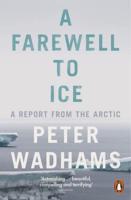Publisher's Synopsis
What role did Ice Age climate play in the demise of the Neanderthals, and why was it that modern humans alone survived? For the past seven years a team of international experts from a wide range of disciplines have worked together to provide a detailed study of the world occupied by the European Neanderthals between 60,000 and 25,000 years ago: the period known as Oxygen Isotope Stage 3. This collection of papers documents the extensive environmental research conducted by the Stage 3 Project. The new chronological and archaeological database constructed by the Project sets the Neanderthal and modern human sites in a continent-wide framework of space and time. A mammalian data base maps the ecology and fauna of the period, providing fresh insights into the availability of plant and animal foods in different parts of the European landscape as Ice Age climate changed and fluctuated. New high-resolution computer simulations give detailed estimates of temperature and rainfall, and above all of the wind-chill and snow cover that would have such an impact on both humans and on the resources they needed for survival. The results provide revolutionary insights into the glacial climate of Stage 3 and the landscapes and resources that influenced late Palaeolithic life-styles.










